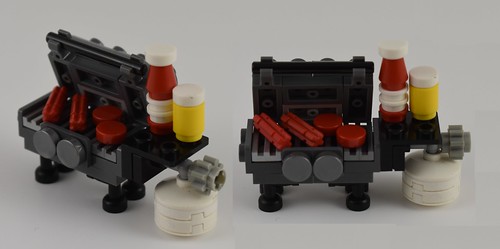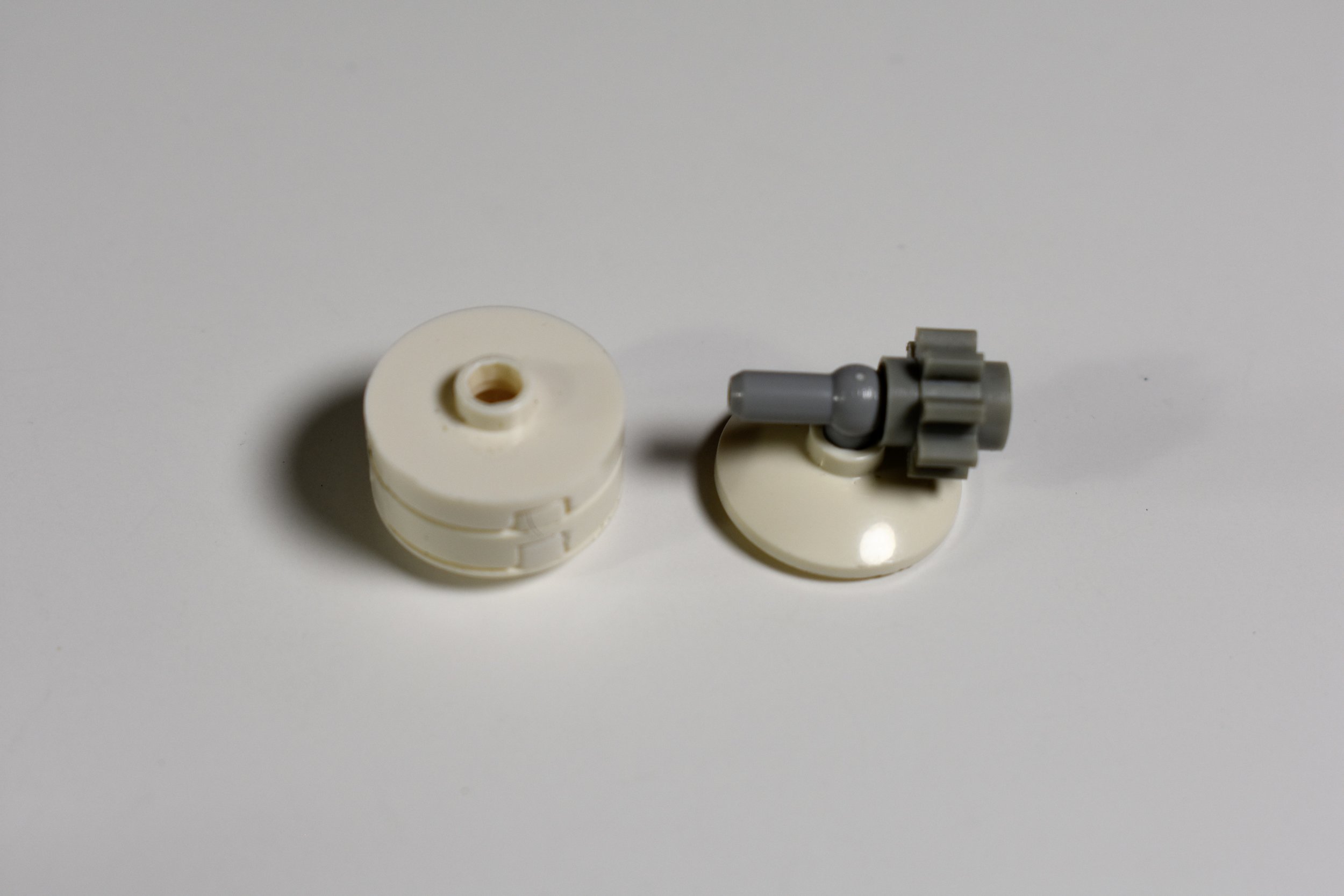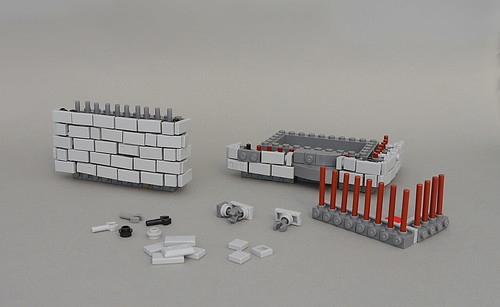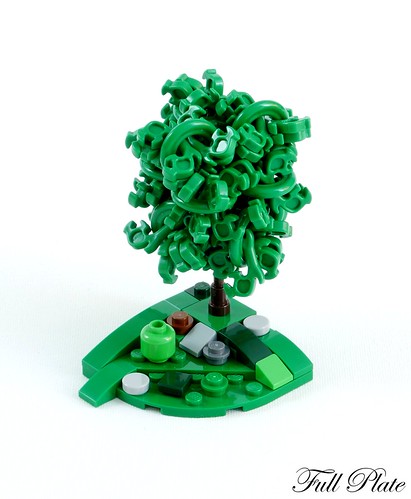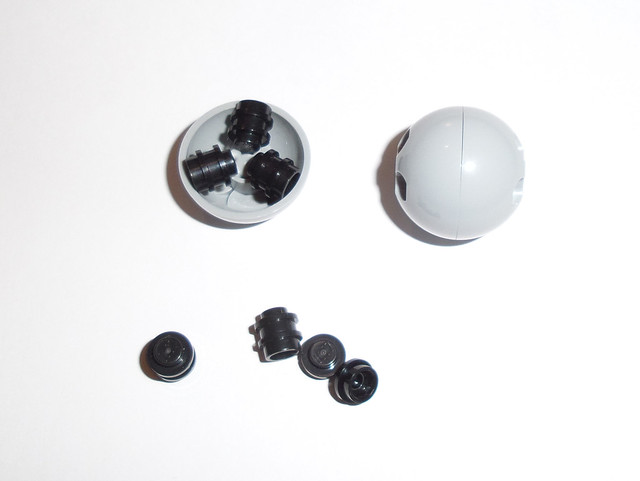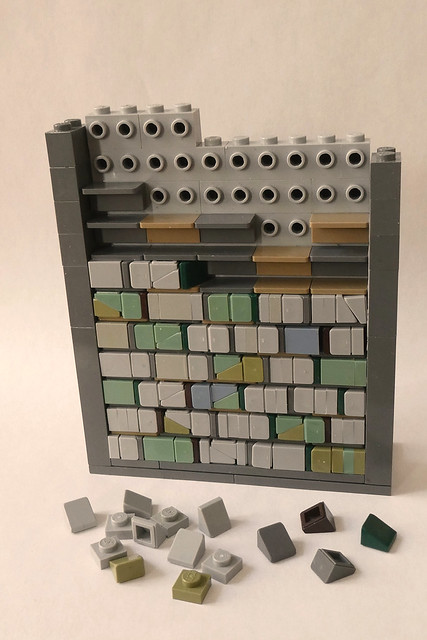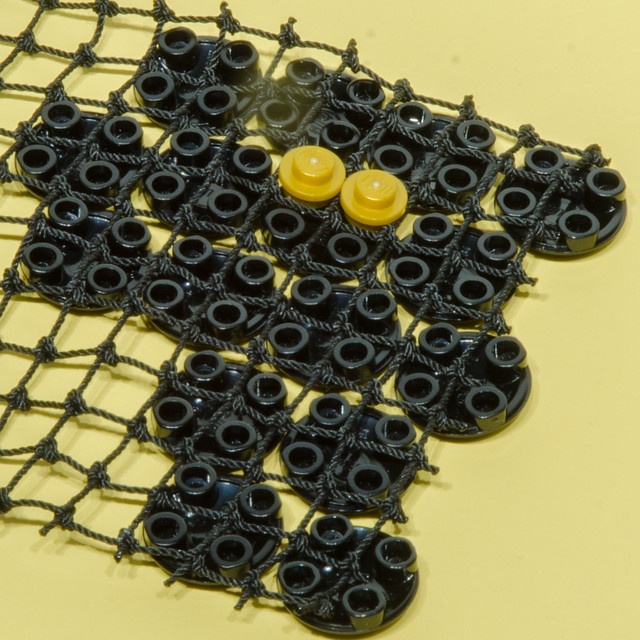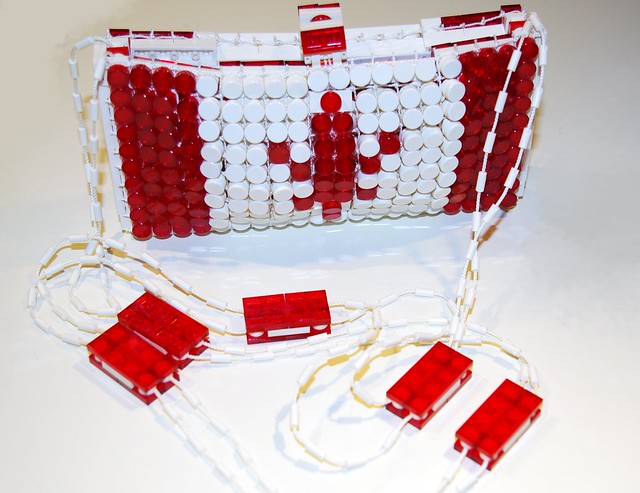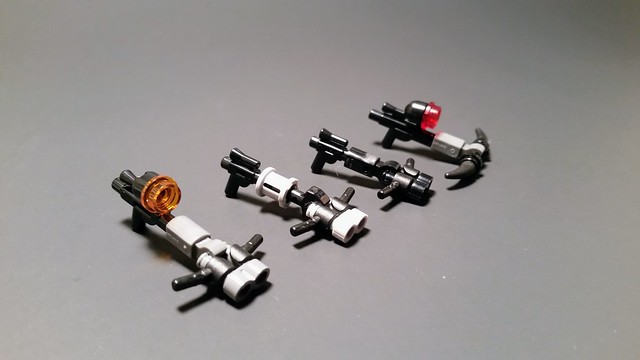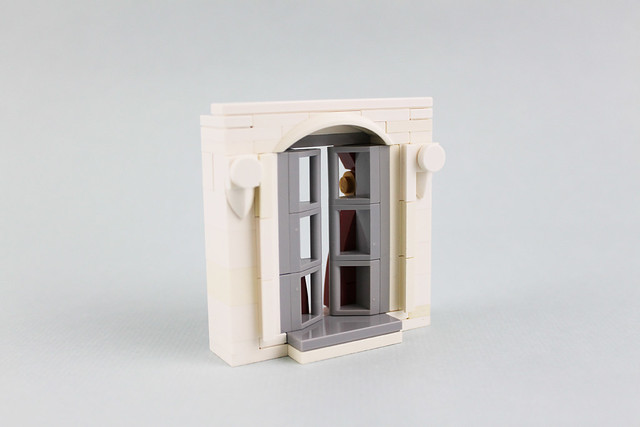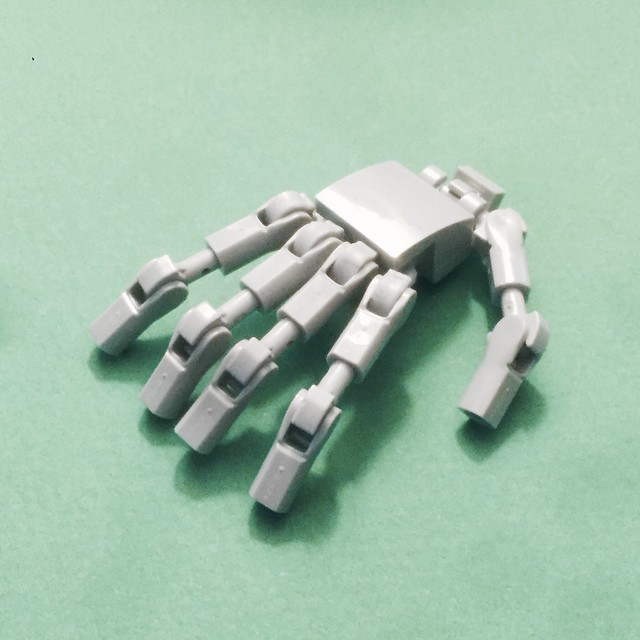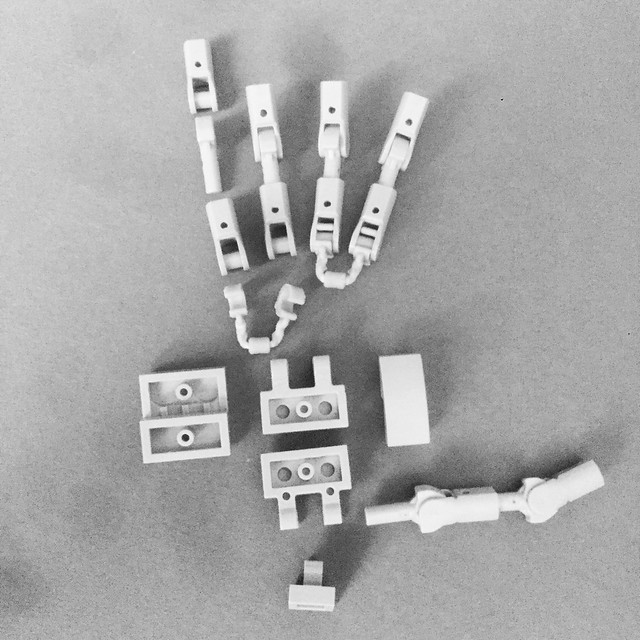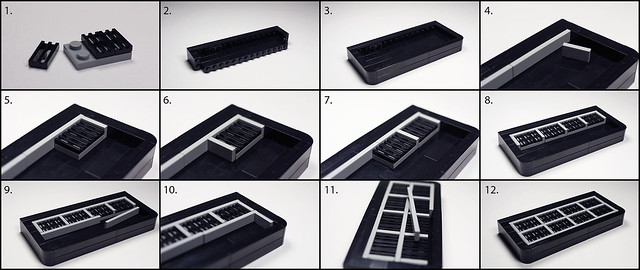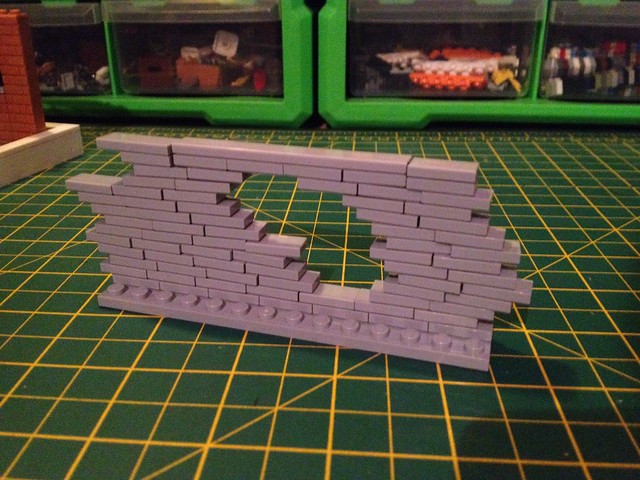Hitting the White Curved Slopes: How to Create a Luxury Car
/Where do you start when building a luxury LEGO car? How do you determine the color and shape, let alone the interior? My philosophy is to let the pieces guide you.
Read MoreA Bonsai Strong Enough to Weather a Winter Storm
/If you have noticed the internet being overrun by LEGO bonsai trees as of late, it is for good reason. Brickset’s Build a Bonsai Competition is churning out some amazing entries (all because of the goats for a prize, I’m sure!), and Carter Witz is throwing his hat into the ring. His elegant bonsai would look at home on the neatest desk, but there’s more to this creation than meets the eye!
Read MoreTechnique Tuesday - Weaved Branches
/One of the best things about the LEGO community is that we can learn from one another. Here at BrickNerd, we like to share techniques that we see from builders all around the world. . .
Full Plate has experimented with many unique tree designs. This month, he's adding to his growing collection of recent landscape projects. These snow covered tress (though the white leaves could be replaced with another color if you wish), are incorporating a "weaving" technique with some the individual leaf elements being held in by friction. The end result is a very realistic tree appearance which, according to the builder, is fairly solid and can even be held upside down. Very impressive!
Technique Tuesday - Grill Tutorial (Ft. Dzambito42)
/One of the best things about the LEGO community is that we can learn from one another. Here at BrickNerd, we like to share techniques that we see from builders all around the world. . .
Roughly a month ago, we featured Dzambito42's neat "Grilling" vignette scene. I found his grill design to be incredibly good, and so I wanted to feature his design here for Technique Tuesday. A special thanks to David, who after I reached out to him, provided me with the breakdown and photos for us to share here for you all.
I have provided a couple of David's breakdown photos below. If you'd like his complete (and detailed) process, check out the album I compiled of the photos provided to me.
Breakdown:
Technique Tuesday - Clipped Stonework
/One of the best things about the LEGO community is that we can learn from one another. Here at BrickNerd, we like to share techniques that we see from builders all around the world. . .
Are you feeling a little more advanced today? Good! We've covered some more basic stonework techniques before, but we're taking things up a notch with this design by Marcel V. If you have a lot of bar elements and modified studs with a hole to spare, this is the design for you! One beneficial aspect of this technique is that it really provides you with the ability to angle the stones to make them crooked and even protruding from the wall. Very intricate, and looks fantastic when completed!
Technique Tuesday - How Could Tree Designs Get Anymore Crazy?
/One of the best things about the LEGO community is that we can learn from one another. Here at BrickNerd, we like to share techniques that we see from builders all around the world. . .
I think Full Plate broke the barrier when it comes to microscale tree designs. This technique could totally work for a larger tree, but man would it require a lot of parts! I know that I have seen many tree designs used for microscale models, but I haven't seen anything new in ages. A strange combination of parts in green can create something very organic before your eyes. Check out this breakdown provided by the builder!
Technique Tuesday - Simple Spheres
/Every once in a while you just need to connect two elements together that were not designed to fit that way. That is usually the genesis of a cool technique in fact, just a clever way of doing something LEGO never intended (subversive and creative at the same time!) This is an astoundingly simple way to connect two sphere halves by ledamu12 that will have you going "why didn't I think of that?"
Technique Tuesday - Sloped Tile Flooring
/One of the best things about the LEGO community is that we can learn from one another. Here at BrickNerd, we like to share techniques that we see from builders all around the world. . .
Ulrik Hansen brings us a bit more complex technique, or at least more parts intensive for some builders. This style of sloped tile flooring can be used in many environments, whether it's inside your castle, or even a stone/concrete wheelchair access ramp outside of your town hall. As always with LEGO, the possibilities are endless. Example 1 involves 1x2 hinged bricks, which to me is such an awesome idea. The second image Ulrik provides us with uses connected headlight bricks, and shows another way with cheese slopes. Thankfully, the images are very clear and are easy for many builders to understand what's happening. I have never seen some flooring like this before, at least with these specific parts used to create the effect. Very nice technique, and one we're happy to share with you all!
Technique Tuesday - Panels And Cheese Make A Delicious And Interesting Wall
/Getting large flat surfaces (AKA walls) to be interesting usually takes a lot of parts and a lot of work, but even then they lack sufficient detail. Builder Simon NH shows us a technique that uses panels and a wide assortment of small parts to really break up the surface in not only color and size, but also subtle texture. I can't vouch for how sturdy it is, but it certainly looks fantastic.
Technique Tuesday - Fa-brick
/Builder BMW_Indy is credited with this fabric (get it, fa-brick?) technique. Using boat tiles, netting and pips you can weave as much as you need, as long as it's in 10x10 pieces. Builder Deborah Higdon used this technique to great effect with this stylish purse.
Technique Tuesday - Bowcasters
/One of the best things about the LEGO community is that we can learn from one another. Here at BrickNerd, we like to share techniques that we see from builders all around the world. . .
I haven't seen any many techniques come across my feeds this week, so I decided to do one other feature of my own techniques. Any Star Wars fan is familiar with Chewbacca's famous bowcaster, but do you remember what LEGO provides as an accessory? That's right, just a silver LEGO crossbow piece, the same used in castle sets. Or, now they have the crossbow stud shooter. Sometimes you just need something else, a weapon of your own design. Did you know that most Wookies craft their own bowcasters? Using simple parts, I created a series of different bowcaster designs. Each is scaled for minifigures, maybe just a bit long in some cases (but not too terrible). I think my favorite design is third from the right. Do you have a favorite design? Obviously the combos can we mixed and matched, which allows a bit of "customization" for your minifigures. You can take a closer look over on my Flickr page, NS LEGO Designs. Thanks for taking a look!
Technique Tuesday - Windows for Your Houses
/If you're into LEGO architecture, or you enjoy building houses, then you need to check out this window design by James Zhan! With a front and back view of this window style, the pieces come together to create a very unique window design. As we usually try to share here on BrickNerd, James' model also uses common elements that most builders likely have in their collections. Do you think you'll give this a try? Let us know down in the comments! Build on, everyone.
Technique Tuesday - Gothic Text Galore!
/One of the best things about the LEGO community is that we can learn from one another. Here at BrickNerd, we like to share techniques that we see from builders all around the world. . .
This week, we're making you read. Well, I suppose you already are doing that, huh? Lisqr has developed this awesome Gothic font style out of some new LEGO elements. It truly can be deceiving when looking at it -- sometimes it does not even appear to be our favorite plastic bricks in the slightest. The style of the letters is so creative, and really well done. I wish I could type any and all of my assignments in this font...
Technique Tuesday - Treasure Chest Lids
/One of the best things about the LEGO community is that we can learn from one another. Here at BrickNerd, we like to share techniques that we see from builders all around the world. . .
This week I actually wanted to share one of my own techniques. I recently came into possession of more treasure chests, and I happened to be working on a creation that needed a uniquely textured wall. For this technique I removed the treasure chest lids and only used those. By connecting lids together with tiles, they came together to form columns (as seen below). The lids do not connect together from the inside, so this can be a bit fragile at first. The small hole you see half way up the column is not large enough for a bar attachment, which is a downside. There is no way to get rid of it, because half of each column must face the other way in order to fit together. However, neck brackets can slide into the gaps on the top and bottom of each column. This allows you to switch back to studs-on-top building, which means you could connect each column to a floor or ceiling. With enough friction on the top and bottom, this wall will hold securely. Hope you found this technique inspiring and useful! See this technique and more on my Flickr, NS LEGO Designs.
Technique Tuesday - Handy Handcuff Hands
/One of the best things about the LEGO community is that we can learn from one another. Here at BrickNerd, we like to share techniques that we see from builders all around the world. . .
Josephine Monterosso has put together a tutorial for some neat robot hands. Some might call it an illegal technique, but I think bending back handcuffs as joints is quite a clever technique, and it makes it easy to fit four fingers organically into such a small space.
Technique Tuesday - Simple But Effective Flooring
/One of the best things about the LEGO community is that we can learn from one another. Here at BrickNerd, we like to share techniques that we see from builders all around the world. . .
Flooring is an often overlooked aspect of a good vignette or diorama. But rather than treating it as an afterthought I think you'll find paying attention to this area adds a lot of punch if it's well integrated. This doesn't mean it has to be super elaborate or a parts hungry nightmare. This technique by N-11 Ordo is a pretty good balance of parts to impact and can be modified to fit a number of genres from space to castle.
Technique Tuesday - Building Guides
/One of the best things about the LEGO community is that we can learn from one another. Here at BrickNerd, we like to share techniques that we see from builders all around the world. . .
This week's tip isn't really about a particular technique, but more of an invaluable resource. Brickgun.com not only has a slew of really cool weapons, instructions and other nifty models to purchase, there's also a ton of really valuable and useful building guides in the free section. I have a print out of all these at the studio, they really come in handy. Click through and grab them, and give the site a good look, it's excellent.
Technique Tuesday - Damaged Wall
/One of the best things about the LEGO community is that we can learn from one another. Here at BrickNerd, we like to share techniques that we see from builders all around the world. . .
This week we're featuring another wall technique demonstrated by Mala43b. Using 1x2 jumpers (tiles with studs in center) and normal 1x2 tiles, the builder gives an example of a heavily damaged structure. A technique like this would fit perfectly in a city battle, perhaps with military tanks advancing on the town. It's great to continue to see more wall techniques that have nice texture, but use common elements to great effect. Build on, everyone!
Technique Tuesday - Stacked Stone
/Introducing our very own Technique Tuesday! Each Tuesday, we will be featuring at least one post that contains a technique tutorial from builders like you!
One of the best things about the LEGO community is that we can learn from one another. Here at BrickNerd, we like to share techniques that we see from builders all around the world. . .
Simon NH shares many useful techniques over on his Flikr page. For our first official Technique Tuesday post, we are featuring his most recent demonstration, a stonework technique for walls. What an interesting pattern created by these simple elements. It looks fairly sturdy from this image alone, which is nice since some similar techniques can collapse pretty easily. Thanks for sharing with us, Simon! Tune in next week as we continue to feature more techniques! Happy building.







